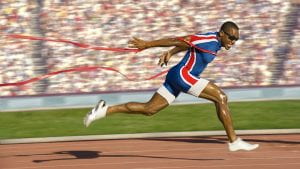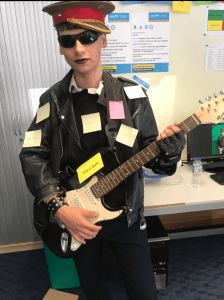My Tour Poster
I have researched punk tour posters and I have learnt that they have the conventions of:
- a black background
- have a splash of colour (pink, orange, red)
- a drawn or animated image of the artist/ what they’re associated with/ no image at all
- the artist (if any) is looking anarchic and rebellious
- the main cover line is on an angle
- the font is blocky, distressed, scratchy and hand written
- there are aspects of Serif font in captions
- there are images of skulls or skeletons
As well as my tour poster being conventional, I also want it to be unique and different in order to create attraction and interest for my artist from my target audience also ensuring that they will not be disappointed.
Below is my tour poster.
By using Adobe InDesign and Photoshop I have been able to create my punk tour poster by cutting and developing my image in order to make it appealing to my target audience. Below is my reflection on my tour poster:
My poster is conventional of the punk genre because:
- there is a colour palette of black and white with splashes of colour
- my model is wearing leather and bold make up
- the font is blocky and distressed
- the model looks disobedient
However, as well as being conventional, my poster is also unique because:
- despite not having the main cover line on a diagonal, the cover line and the captions are on an angle, making my tour poster unique
- I have used an image of my artist but there are aspects of animated drawings
My poster addresses AIDA (Attention, Interest, Desire, Action) by featuring:
- a large image of the artist
- large fonts for the artists name and the tour name
Reflection
As a whole, I really like the way that my poster has pieced together with the image and the colour scheme. The different fonts direct where your eyes go and the large image of the artist informs the audience who the poster is about. However, I would change the direction of the models eyes in order to help the audience focus on the information about the tour, rather than beind drawn to the left side of the poster where there is no information. But otherwise, I think that my tour poster is very successful at portraying the genre of punk and promoting the tour.







